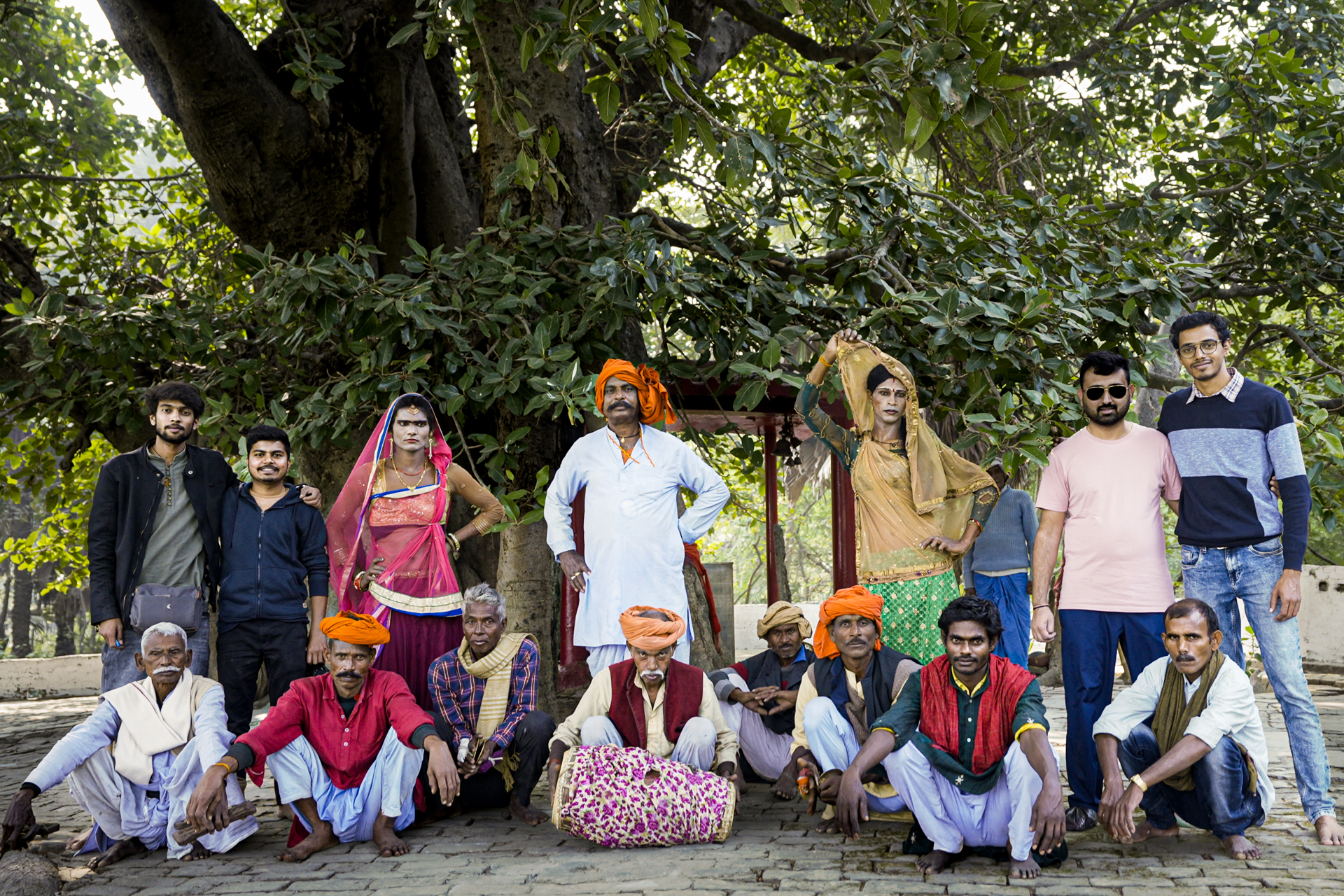
Transcending gender norms in the hinterlands of Uttar Pradesh
Although shunned and considered taboo, crossdressing and energetic, suggestive dancing remains a thriving aspect of folk culture in Eastern Uttar Pradesh.
Dance is an integral part of folk culture and music, and Uttar Pradesh is no exception. The state is known for its energetic and vibrant dance performances at weddings and other events like political rallies. Even the festivals like Holi and Dussehra are celebrated with dance and theatre performances called nautanki. The dance forms broadly fall into two categories – one connected with religion in one way or the other, like Ram Leela, Ras Leela, Yaksha Gaana and so forth, and the other is based on different aspects of life primarily intended for entertainment. Lavanda dance belongs to this second category of dances and is very popular in the rural areas of Eastern Uttar Pradesh and Bihar. The dance is a prominent cultural feature of the Bhojpuri-speaking population.
The dance is notable for its highly energetic music, and the dance is performed by men dressed up as women in sarees. These men are known as Lavandas. This custom has its roots in nautanki and has been around for a few generations. Nautanki originates in Multan, Sindh, in present-day Pakistan, with traditional histories stating that there was a princess named Nautanki after whom the art form is named. Different kinds of stories were conveyed in these nautanki dramas, and they soon spread to Punjab and arrived in the Gangetic plain in Uttar Pradesh. The local customs and societal norms in Uttar Pradesh back then did not allow women to participate in these performances, and hence, men would play the female parts in drag.
Soon dance became an inevitable aspect of nautanki, and it soared in popularity among the masses. Men started dancing to various songs and situations in drag, and this became a pertinent part of celebrations and gatherings and eventually acquired the name Lavanda. Although women would also dance traditionally, the dance forms of women, like mujra, were more geared towards emotions, delicacy and longing. On the other hand, Lavanda dances are more about energy, vibrance and even suggestive vulgarity that appeals more to men. This is why the dance form is still so prevalent in these regions.
The music can be anything as long as it is dance-worthy. Loud percussion instruments like Nagada, Naal, and Dhol are commonly used. Nowadays, people even use DJs and recorded music on loudspeakers, but traditionally instruments were played live, and the songs were often based on mythology and folklore. The dances would begin with a prayer and had an aspect of bhajan and devotion to it. Other popular topics are weddings, husband-wife relationships and the feelings of blooming love.
Satrughan Paswan is one such Lavanda who started dancing to cope with his family’s poverty. He started around the age of 14, earning about 50 rupees for performing all night at weddings. His uncle was the first to notice his dancing talents and thought that he would do an excellent job as Lavanda. Satrughan got his nose and ears pierced, and his popularity as a dancer proliferated. His earnings slowly increased to 500, then 1000, and now he earns about 2500 rupees for one performance.
For many years, he was part of the group headed by Nathuni and they have performed all across Uttar Pradesh and Bihar. A couple of years back, they even served in the Bhojpuri Cultural Festival in Delhi, where they received a certificate of appreciation. Nathuni has been a dancer all his life, too, but due to his failing health and weak legs, he has now retired and lives in Dubhar, a village in the Ballia district of Uttar Pradesh. Nathuni has fallen to hard times as his earnings have stopped, and he and his wife have no family to rely on.
Satrughan lives in Bahadurpur, which is close to Dubhar. He is pretty popular in his village for his dance and performing acrobatic moves. He is the primary earning member in his family and has about 25 years of experience as a dancer. He now heads the group formerly headed by Nathuni. Lavanda dancers often face stigma and discrimination in society because they are considered less manly, and the dance is seen as less respectable and indecent. Satrughan and his group members believe that the stigma associated with the art form is unwarranted as they have managed to sustain their families through it and gained fame and respect for their talents. Satrughan and other dancers in the group, like Salgu, all began dancing to earn a few bucks at a very young age, mostly compelled by their families. Still, they are happy doing it today and take pride in their ability to perform as a Lavanda.
Rambhaj Paswan sings along with the Lavanda dancers, and they perform more traditional folk songs instead of film songs. Historically, songs like Ghazals, Dadra, Chaita, Thumri were performed in Lavanda dances, but today filmi music has taken chiefly their place. Few groups remain that still perform these traditional songs today. The dance form also owes its longevity to its adaptability and how it fits into a variety of situations and different styles of music.
